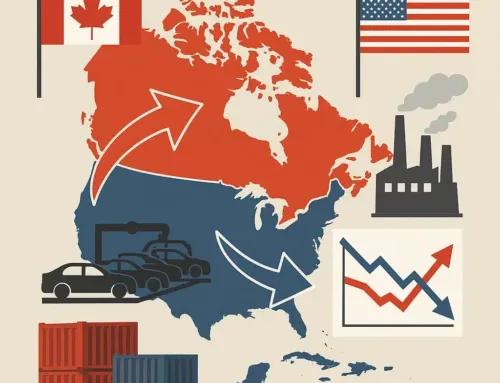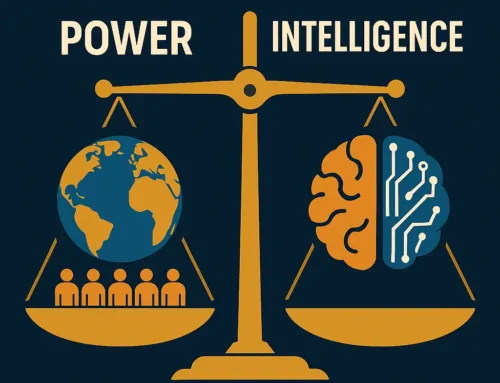
Approx. read time: 13.5 min.
Post: The Economic Fallout: Comparing Germany’s Post-WWI Recovery to Russia’s Current War Strategy
Comparing post-WWI German economic recovery to Russia’s current war financing strategy and its long-term economic consequences
The economic troubles that Germany faced after World War I are quite legendary. The war had driven up the nation’s debt significantly, and the government’s solution was to repay this debt through rampant money printing, which led to devastating hyperinflation. The impact of this hyperinflation was severe, and it took years for the German economy to recover. Despite the immense challenges, Germany eventually managed to stabilize and grow richer within six or seven years after the war, even with the burden of reparations and hyperinflation. However, the approach that Germany took, relying heavily on domestic debt and managing consumption through war bonds, contrasts starkly with how Russia is currently financing its war efforts. In fact, Russia’s method might be setting it up for far greater long-term economic difficulties, exacerbated by its new pacts with North Korea, China, and Saudi Arabia.
Financing War: A Historical Perspective
During World War I, a significant portion of the economy was redirected towards military production. Factories that previously manufactured consumer goods were repurposed to produce military equipment. This shift meant that civilian production directly competed with military production, with the latter taking priority. As a result, civilians had money but fewer goods to buy, leading to economic challenges on the home front.
To manage this, many governments issued war bonds. This strategy aimed to finance the war by diverting public money towards the war effort, effectively reducing civilian consumption and allowing for more military production. In theory, war bonds also ensured that after the war, when production shifted back to consumer goods, there would be a pool of customers ready to spend, thus stimulating the post-war economy. Although this system was not without its flaws, the underlying principle was sound: limit civilian consumption during the war to prioritize military needs and stimulate the economy after the war ends.
Russia’s War Financing Strategy
Unlike Germany during World War I, Russia is financing its current war efforts in a way that could have much more detrimental effects on its economy. Rather than relying on domestic debt or war bonds, Russia is depleting its accumulated reserves and paying substantial bonuses to those who enlist or are injured or killed in the conflict. This approach stimulates consumption rather than curtailing it, as additional money and resources are poured into the economy.
This increase in consumption, coupled with factories prioritizing wartime production, means that Russia is importing more goods to meet civilian demand. This scenario stifles domestic producers who cannot compete with the influx of foreign goods. Moreover, the increased consumption contributes to inflation, and the manpower shortage due to the war effort drives up wages.
The New Pacts: More Complex Challenges – Comparing post-WWI German economic recovery to Russia’s current war financing strategy and its long-term economic consequences
The recent pacts that Russia has made with North Korea, China, and Saudi Arabia add further complexity to its economic situation. These alliances are primarily focused on military and strategic cooperation, but they also have significant economic implications.
- North Korea: Russia’s partnership with North Korea involves military support and possibly sharing resources. While this may bolster Russia’s military capabilities, it diverts even more resources away from civilian needs and exacerbates the economic strain. North Korea’s economy is already fragile, and any significant trade or resource allocation to North Korea means fewer resources for domestic consumption and production.
- China: China’s involvement is a double-edged sword. On one hand, it provides Russia with a vital economic partner that can supply goods and possibly financial support. On the other hand, it increases Russia’s dependency on Chinese imports, further sidelining domestic producers. China’s economic leverage could also mean that Russia has to align its economic policies closely with Chinese interests, which might not always align with Russia’s long-term recovery goals.
- Saudi Arabia: The alliance with Saudi Arabia, primarily around energy cooperation, could bring in significant revenue through oil sales. However, the global energy market’s volatility and the need to maintain favorable terms with Saudi Arabia can limit Russia’s economic flexibility. Furthermore, this partnership does not alleviate the immediate issues of inflation and domestic production challenges but rather shifts focus to energy exports, which are subject to market fluctuations.
The Consequences of Russia’s Strategy
Russia’s current approach, compounded by these new international pacts, has several far-reaching consequences:
- Increased Inflation: With more money circulating in the economy and fewer goods being produced domestically, inflation is bound to rise. This erodes the purchasing power of ordinary Russians and creates economic instability.
- Economic Displacement: As foreign goods flood the market, domestic producers struggle to compete. This displacement can lead to a long-term decline in Russia’s manufacturing capabilities and economic self-sufficiency.
- Wage Pressures: The manpower shortage due to the war effort pushes wages up, increasing the cost of production and making domestically produced goods even less competitive.
- Post-War Economic Challenges: Once the war ends, the sudden stop in military spending and bonuses will lead to a sharp drop in consumption. Foreign brands, already established in the Russian market, will continue to dominate, while domestic industries, weakened by years of war production and competition from imports, will struggle to recover.
- Difficulty in Re-tooling: The process of re-tooling factories from military to civilian production is always challenging. However, with the added issues of a weakened domestic industry and established foreign competitors, this process will be even more difficult for Russia.
Long-Term Economic Outlook for Russia
Looking at the long-term economic outlook, Russia’s strategy appears to be setting the stage for significant post-war economic difficulties. Unlike Germany, which managed to stabilize and grow richer after World War I despite its challenges, Russia faces a more precarious future. The combination of increased inflation, economic displacement, wage pressures, and the difficulties in re-tooling factories will likely result in a prolonged economic downturn.
Moreover, Russia may never regain the economic peak it had before COVID-19 and the current war. The depletion of reserves and the economic disruption caused by the war effort will leave lasting scars on the economy. The domestic market’s over-reliance on foreign goods and the weakened state of local industries will make recovery an uphill battle. The new alliances with North Korea, China, and Saudi Arabia add layers of complexity and dependency that could further hinder Russia’s ability to recover independently.
Conclusion – Comparing post-WWI German economic recovery to Russia’s current war financing strategy and its long-term economic consequences
In conclusion, while Germany’s post-World War I economic woes were severe, the country managed to recover and grow stronger in the following years. Russia, however, is financing its war efforts in a way that could lead to far greater long-term economic damage. By stimulating consumption and depleting reserves instead of curbing it through measures like war bonds, Russia is setting itself up for inflation, economic displacement, and significant post-war economic challenges. The new pacts with North Korea, China, and Saudi Arabia introduce additional complexities that make the economic outlook even more uncertain. The road to recovery will be steep, and the economic landscape may be fundamentally altered for years to come. Peace, when it finally comes, might bring more economic hardship than the war itself.
The Transformation of the Global Economy: The Decline of Russian Influence
If, just a few short years ago, anyone suggested the world economy would no longer need Russia and its resources, they would probably be ridiculed. Yet, in 2024, a historic global shift has taken place, rendering this laughter nothing but a whisper of the past.
Few people would have predicted such a massive change in such a short time. After all, it was only in 2021 when a staggering 83% of Russian gas was being exported to Europe. Dozens of countries were at least 50% dependent on this gas, including Germany, Finland, Greece, and Austria. At the same time, countries like Japan and China were among Russia’s top consumers of liquefied natural gas (LNG). That’s why Vladimir Putin, the President of Russia, believed that he could hold the global economy hostage following the 2022 invasion of Ukraine, using Russian commodity exports as a bargaining chip.
However, Putin’s economic gambits can be added to the increasingly long list of miscalculations the Russian president has made since invading Ukraine, right up there with underestimating the people of Ukraine. Though the world economy is certainly not at its peak, it hasn’t succumbed to Putin’s stranglehold, leading to an unexpected yet obvious conclusion – it no longer needs Russia.
The Shift Away from Russian Resources
The Energy War
Given how dependent the global supply chains were on Russian products, how did the West manage to beat Putin on this second war front he established – the energy war? It turns out the joint strength and solidarity of the West was another aspect Putin miscalculated. Efforts to find alternative energy sourcing and establish collaborative initiatives were aided by an unseasonably warm 2022 winter, which lowered the overall demand for energy in the following months and years.
To understand the full scope of the West’s response, we must first define the areas where the world economy has been most dependent on Russia’s exports. Gas is undoubtedly No. 1, but the critical role of Russian oil, metal, and agriculture should not be minimized.
Mitigating Dependence on Russian Gas
As already mentioned, Europe relied on Russia for almost 50% of its total gas supply. It’s no wonder Russia exported roughly 200 billion cubic meters of natural gas annually, accounting for half of the country’s federal revenue. These figures gave Putin the confidence to cut off gas supplies to Europe indefinitely in September 2022. Though the Kremlin claimed this move was a response to the West’s punitive economic sanctions, a more sinister agenda soon became apparent. Putin’s goal was for Europeans to freeze in cold homes, forcing them to turn on their leaders and demand they cease support for Ukraine.
However, Europe came up with a third option rather quickly: securing alternative gas supplies for its energy needs. The European Commission made three key steps to weaken Russia’s grip on its economy:
- Demanding Gas Reduction: Initiated long before Russia cut off the gas supplies, this move allowed Europe to create joint storage, filling it as much as 82%.
- Securing Alternative Gas Sources: Europe diversified away from Russian fossil fuels, including finding alternative sources of oil and coal. The U.S. supplied an estimated 55 billion cubic meters of LNG to Europe, and Norway overtook Russia as the European Union’s biggest piped gas supplier.
- Increasing Supply from Renewable Sources: Europe managed to reduce its dependence on Russian gas to an impressive 9%, marking a pivotal stride toward energy autonomy.
A warm winter also came to Europe’s rescue, allowing the continent to avoid the worst-case scenario and accumulate gas in its storage tanks. German storage tanks, for instance, reached a record high of 91% in 2023.
The Role of Liquefied Natural Gas (LNG)
Why LNG, and where is all this LNG coming from? Unlike piped gas, LNG doesn’t require pipelines for transport. Instead, gas is transformed into liquid using liquefaction, transported on ocean tankers, and then converted back to gas at its final destination. This technology, used in full effect by the U.S. for the first time in 2016, has allowed Europe to secure sufficient energy supply while making alternative energy sources fully operational.
China, the world’s largest LNG importer, is gradually turning to domestic sources instead of global ones. This, combined with the lower overall demand for LNG, indicates the world economy is expected to make a full recovery after such a tumultuous period.
The Oil Market
Russia is one of the world’s largest oil exporters, delivering as many as 9 million barrels per day at its peak. In 2021, this figure was about 7.9 million per day. Shortly after the Russian invasion of Ukraine, oil prices skyrocketed by almost 20% as the U.S. and Europe considered a ban on the country’s imports. Eventually, the G7 Summit opted to implement oil price caps to limit Russia’s earnings from one of its most profitable commodities.
Putin responded by announcing a ban on crude oil sales to countries participating in these price caps, starting on February 1, 2023. Contrary to his expectations, oil prices went down, making it clear the world no longer needed Russian oil. Countries like the U.S., Canada, Brazil, and Venezuela produced 4 million barrels a day in total in the second half of 2022, replacing any “lost” Russian oil seamlessly.
The Role of Saudi Arabia and OPEC+
Though Saudi Arabia was supposed to be a U.S. ally, it seemingly partnered with Russia to manipulate the price of oil. However, the West subjected OPEC+’s major unused capacity to intense scrutiny, preventing Saudi Arabia from rescuing Russia repeatedly.
Agricultural Exports
Putin tried to weaponize food supplies by holding Ukrainian grain hostage and shelling agricultural infrastructure. However, Turkey brokered a deal to open Ukrainian ports, allowing the export of food supplies through the Black Sea grain corridor.
The Metal Market
Russia has historically dominated several metal markets, including nickel, titanium, and palladium. Fearing weaponization, many buyers sought alternative sources. The U.S. restored its dormant strategic reserves of key metals, and new mining projects in South America and Africa began, aiming to replace Russian metal supply permanently.
Russia’s Waning Influence
With zero remaining leverage in the world economy, it appears that all these powerful moves by the Western nations taught Putin a valuable lesson – it’s much easier for buyers to replace an unreliable supplier than it is for suppliers to reach new markets.
The “Pivot to the East” Myth
Putin claims Russia can prosper by redirecting its gas exports to Asia, but this is not feasible for several years. Russia’s current pipeline system mainly flows toward Europe, and constructing new pipelines to Asia poses significant challenges. Even if successful, it’s improbable that Russia will match its pre-war European exports.
The Oil Market Reality
While Russia is selling more oil to Asia, it does so at significantly discounted prices. The high cost of transport and production, combined with low selling prices, means Russia is barely breaking even.
Financial Reserves and Economic Stability
Russia’s rainy-day funds are substantial but not a cure-all. At least $300 billion in foreign exchange reserves are frozen. The remaining reserves are rapidly dwindling, leading to a massive budget deficit in 2022. Russia’s reckless spending is unsustainable and will inevitably cause financial turmoil.
Sectoral Decline
Sectors relying on international supply chains face severe inflation and have resorted to cannibalizing parts. Aircraft manufacturers, for instance, use recycled parts from existing machines, leading to unsafe operations and a significant increase in aircraft failures.
Domestic Spending and Business Exit
Despite the Kremlin labeling domestic spending as “healthy,” consumer spending and retail sales have decreased significantly. The exit of major Western companies from Russia has been detrimental, despite Putin’s attempts to spin it as a positive development.
The Future of Russia in the Global Economy
The Russian economy is deteriorating quickly due to international sanctions and joint efforts by Western nations. The only way to ensure Russia can’t recover is to introduce new financial and energy sanctions, which are already being discussed among Ukraine’s allies.
While the Western allies might score victory after victory, each comes at a cost. The road to recovery might be long and bumpy, but it’s clear that Russia will soon have no part in the global economy.
What do you think? Do you agree that Russia’s energy and commodities have been weakened beyond repair? Or do you believe Putin is still in a position to disturb the global economy and its recovery? Share your opinions in the comments section below.









